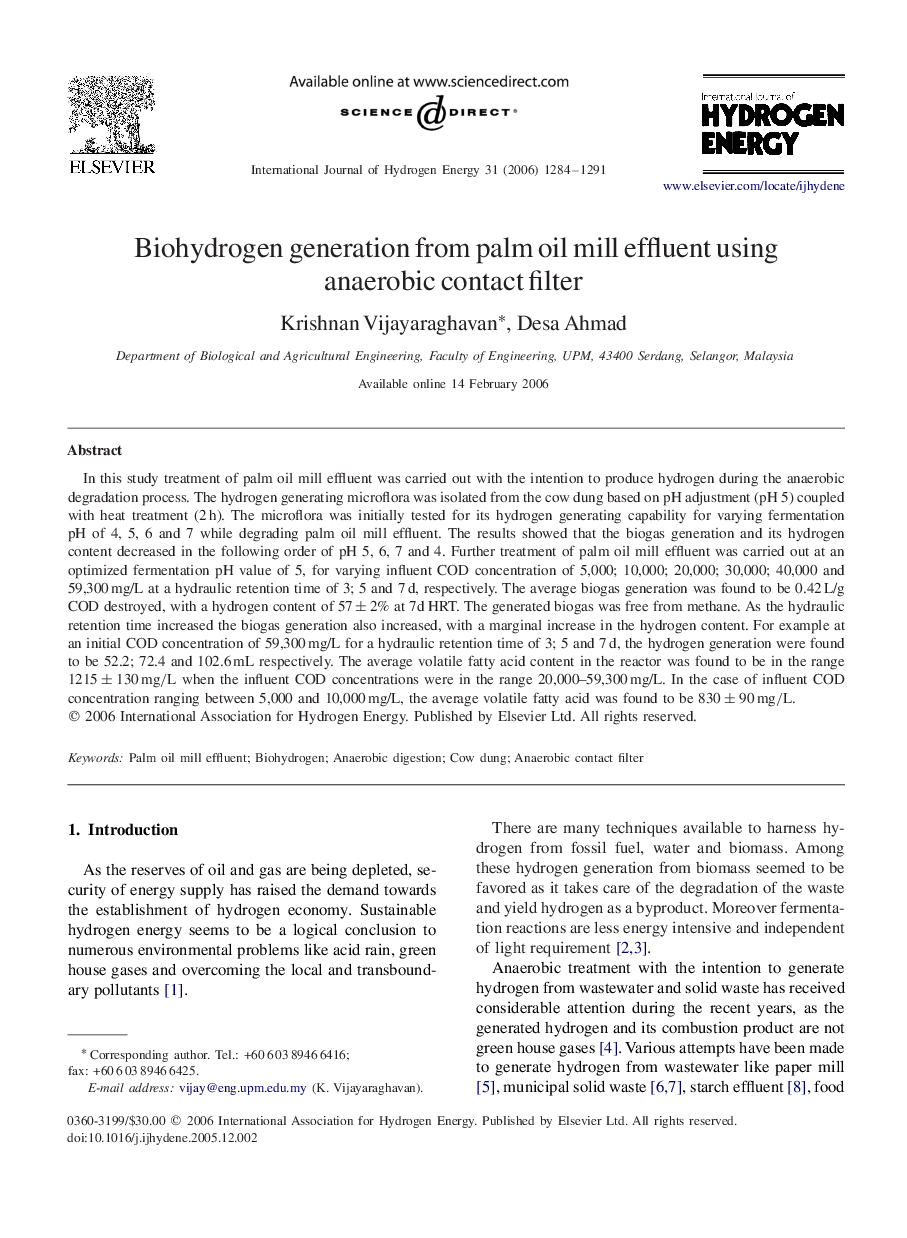| Article ID | Journal | Published Year | Pages | File Type |
|---|---|---|---|---|
| 1280514 | International Journal of Hydrogen Energy | 2006 | 8 Pages |
In this study treatment of palm oil mill effluent was carried out with the intention to produce hydrogen during the anaerobic degradation process. The hydrogen generating microflora was isolated from the cow dung based on pH adjustment (pH 5) coupled with heat treatment (2 h). The microflora was initially tested for its hydrogen generating capability for varying fermentation pH of 4, 5, 6 and 7 while degrading palm oil mill effluent. The results showed that the biogas generation and its hydrogen content decreased in the following order of pH 5, 6, 7 and 4. Further treatment of palm oil mill effluent was carried out at an optimized fermentation pH value of 5, for varying influent COD concentration of 5,000; 10,000; 20,000; 30,000; 40,000 and 59,300 mg/L at a hydraulic retention time of 3; 5 and 7 d, respectively. The average biogas generation was found to be 0.42 L/g COD destroyed, with a hydrogen content of 57±257±2% at 7d HRT. The generated biogas was free from methane. As the hydraulic retention time increased the biogas generation also increased, with a marginal increase in the hydrogen content. For example at an initial COD concentration of 59,300 mg/L for a hydraulic retention time of 3; 5 and 7 d, the hydrogen generation were found to be 52.2; 72.4 and 102.6 mL respectively. The average volatile fatty acid content in the reactor was found to be in the range 1215±130mg/L when the influent COD concentrations were in the range 20,000–59,300 mg/L. In the case of influent COD concentration ranging between 5,000 and 10,000 mg/L, the average volatile fatty acid was found to be 830±90mg/L.
